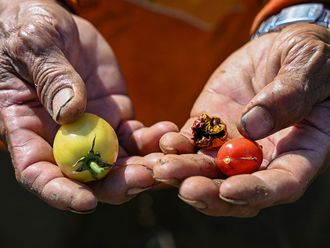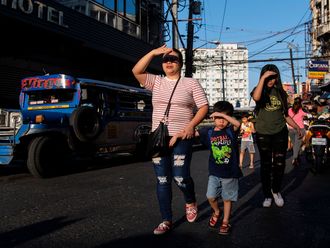Manila: The famous Manila Cathedral in the 400-year-old Intramuros will remain closed for a year to accommodate efforts to strengthen its weak structure and earthquake-challenged soil, a local paper reported.
The cathedral, known as Manila Metropolitan Cathedral-Basilica or Cathedral-Basilica of the Immaculate Conception, has been closed since February 7 after a survey done by consulting firm Angel Lazaro and Associates International showed that the cathedral's soil and structure were weak, Fr. Carlos Reyes, head of the Archdiocese of Manila's Ministry of Ecumenical and Interfaith Affairs, told Manila Bulletin.
Filipino Catholics were sad to lose the Manila Cathedral as a holy destination during the country's celebration of Holy Week from April 5 to 8, in commemoration of the crucifixion of Jesus Christ in Golgotha 2,000 years ago.
"But core tests on [Manila Cathedral's] concrete yielded with failure: stresses occurred from 5,000 pounds per square inch (psi) to 600 psi. The standard is 3,500 psi," Reyes said.
"The capacity of the soil to bear the weight of the entire cathedral has failed. It has potentially liquefiable soil materials," said Reyes, referring to liquefaction, when soil turns into liquid due to unbearable load and earthquake.
The cathedral is sinking and might not survive a strong earthquake, said Manila Archbishop Luis Antonio Tagle.
The Philippines is part of Asia-Pacific's "Ring of Fire" where earthquakes always occur. Last February 6, a temblor measuring magnitude 6.9 on the Richter scale hit Cebu and Negros Oriental in central Philippines.
To solve the cathedral's problem, some of its parts "will be reinforced with carbon fibre wrappings which are light and incredibly strong," said Reyes.
Deep foundations, like piles, will be erected around the cathedral's structure; the soil will be injected with cement in a process called grouting, Reyes said.
Another ambitious plan is to restore the cathedral's original look. Guidance will come from high-definition 3D-laser scanning that gives accurate blueprint of the cathedral's interior and exterior, said Reyes.
The Manila Basilica Foundation has pledged funds for the repair that will last for a year, but refurbishment cost was not revealed.
The cathedral serves as the ecclesiastical seat of the Roman Catholic Archdiocese of Manila. It has designated Manila's Paco Church its temporary church during while the cathedral is being repaired.
Some 200 weddings earlier booked for reservations until March 2013 were affected by the cathedral's closure, said the Bulletin.
It has remained a precious jewel of the Spanish colonial history in the Philippines which began in 1521. It was made of bamboo and originally called Church of Manila when it was established by Juan de Vivero, chaplain on the galleon of San Geronimo (a trading boat between Philippines and Mexico), on orders of the Spanish Archbishop of Mexico in 1571.
It was still made of wood and bamboo when it was expanded in 1579, in preparation for the papal bull, to be issued by Pope Gregory XIII, which consecrated it into a cathedral in 1581.
A second cathedral, made of stone, expanded the structure in 1592; a third cathedral was added in 1614; a fourth, from 1654 to 1671; fifth, sixth, and seventh cathedrals from 1870 to 1879; and the eighth cathedral in 1958.
It was destroyed by fire in 1583; by three earthquakes in 1600, 1645, and 1863; its bell tower was damaged twice by temblors in 1880 and 1990; Second World War bombings (1943 to 1945) almost obliterated it. But its unforgettable magnificence rose after a major renovation from 1954 to 1958.












